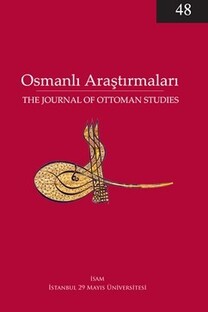The City in the Muslim World: Depictions by Western Travel Writers, Culture and Civilization in the Middle East
The question of space and place’s relevance has slowly been gaining momentum in historiography for several years now. To an increasing extent, historians, especially those in the field of urban history, are asking questions inspired by their colleagues in geography and philosophy departments.
Anahtar Kelimeler:
Mohammad Gharipour, Nilay Özlü, The City in the Muslim World
The City in the Muslim World: Depictions by Western Travel Writers, Culture and Civilization in the Middle East
The question of space and place’s relevance has slowly been gaining momentum in historiography for several years now. To an increasing extent, historians, especially those in the field of urban history, are asking questions inspired by their colleagues in geography and philosophy departments. The volume currently under review is an interesting addition to this body of work; yet it is also very much situated in the academic debate on Orientalism and ‘Islamic cities’. As the editors rightfully indicate, much of this discussion has unfortunately ignored the urban locality of these cities. The editors aim to scrutinize the idea of the Islamic city through the lens of European travel writing, employing the term as a heuristic device to analyse how the cities of the ‘Muslim world’ were represented by travellers from Europe and America
Keywords:
Muslim, Depictions, Western Travel,
___
- Mohammad Gharipour and Nilay Özlü (eds.), The City in the Muslim World: Depictions by Western Travel Writers, Culture and Civilization in the Middle East Milton Park, Abingdon, Oxon: Routledge, 2015, 332 pp., ISBN 978-113-8842-62-5.
- ISSN: 0255-0636
- Yayın Aralığı: Yılda 3 Sayı
- Başlangıç: 1980
- Yayıncı: TDV İslâm Araştırmaları Merkezi
Sayıdaki Diğer Makaleler
Thomas Gaskell Allan ve William Lewis Sachtleben, Accross Asia on a Bicycle
Kanuni Sultan Süleyman Oğlu Şehzade Mustafa’yı 1553’te Neden Boğdurttu?
Osmanlı Tarım Sektörünün Dünya Pazarlarına Oryantasyonu: Bölgelerarası Bir Karşılaştırma (1844)
Derviş Tuğrul KOYUNCU, Abdullah Mesud KÜÇÜKKALAY
Giriş: Temaslar, karşılamalar ve uygulamalar: Osmanlı-Avrupa Diplomasisi, 1500-1800
Michael TALBOT, Phil MCCLUSKEY
Communication and Conflict: Italian Diplomacy in the Early Renaissance, 1350-1520
